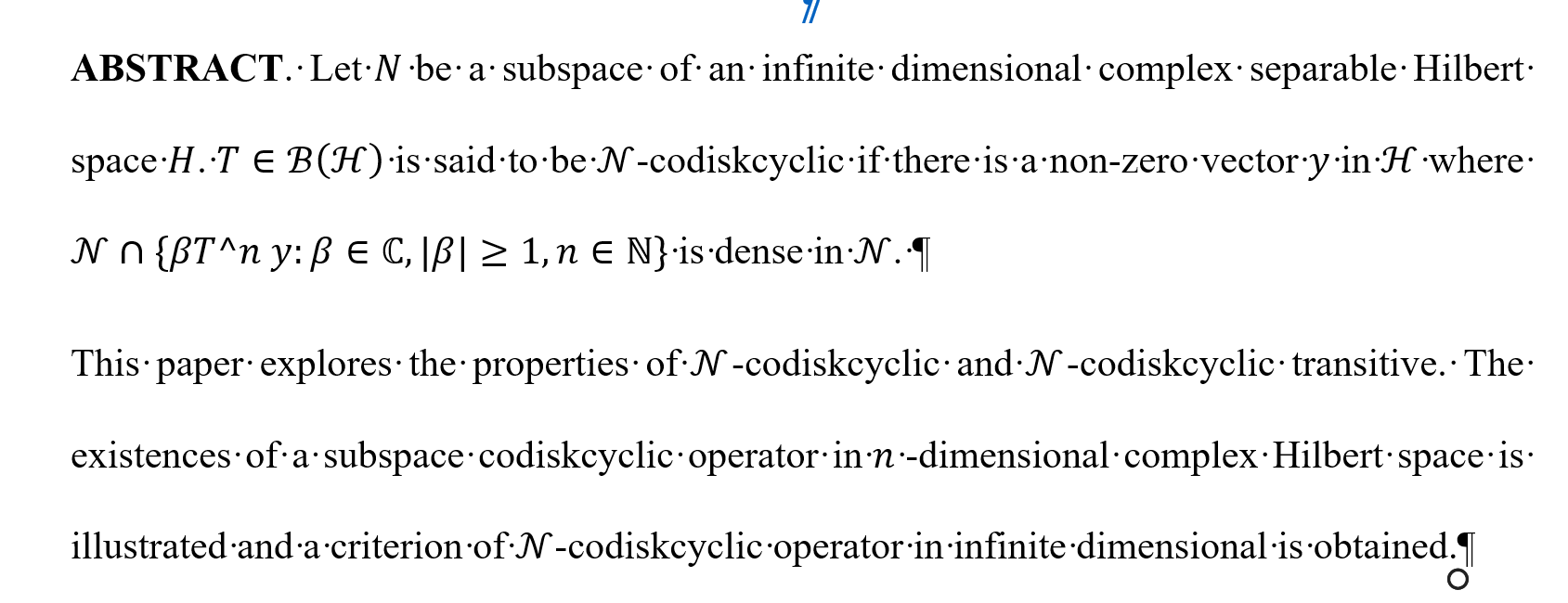The main focus of this article is to introduce the notion of rough pentapartitioned neutrosophic set and rough pentapartitioned neutrosophic topology by using rough pentapartitioned neutrosophic lower approximation, rough pentapartitioned neutrosophic upper approximation, and rough pentapartitioned neutrosophic boundary region. Then, we provide some basic properties, namely operations on rough pentapartitioned neutrosophic set and rough pentapartitioned neutrosophic topology. By defining rough pentapartitioned neutrosophic set and topology, we formulate some results in the form of theorems, propositions, etc. Further, we give some examples to justify the definitions introduced in this article.
Our aim in this work is to investigate prime submodules and prove some properties of them. We study the relations between prime submodules of a given module and the extension of prime submodules. The relations between prime submodules of two given modules and the prime submodules in the direct product of their quotient module are studied and investigated.
 (1)
(1)
Throughout this work we introduce the notion of Annihilator-closed submodules, and we give some basic properties of this concept. We also introduce a generalization for the Extending modules, namely Annihilator-extending modules. Some fundamental properties are presented as well as we discuss the relation between this concept and some other related concepts.
 (1)
(1)
 (4)
(4)
 (2)
(2)
Most of the Weibull models studied in the literature were appropriate for modelling a continuous random variable which assumes the variable takes on real values over the interval [0,∞]. One of the new studies in statistics is when the variables take on discrete values. The idea was first introduced by Nakagawa and Osaki, as they introduced discrete Weibull distribution with two shape parameters q and β where 0 < q < 1 and b > 0. Weibull models for modelling discrete random variables assume only non-negative integer values. Such models are useful for modelling for example; the number of cycles to failure when components are subjected to cyclical loading. Discrete Weibull models can be obta
... Show More (1)
(1)
Let M be an R-module, where R is a commutative ring with unity. A submodule N of M is called e-small (denoted by N e  M) if N + K = M, where K e  M implies K = M. We give many properties related with this type of submodules.
Let R be a commutative ring with identity and M be a unitary R- module. We shall say that M is a primary multiplication module if every primary submodule of M is a multiplication submodule of M. Some of the properties of this concept will be investigated. The main results of this paper are, for modules M and N, we have M N and HomR (M, N) are primary multiplications R-modules under certain assumptions.
 (4)
(4)
 (1)
(1)

